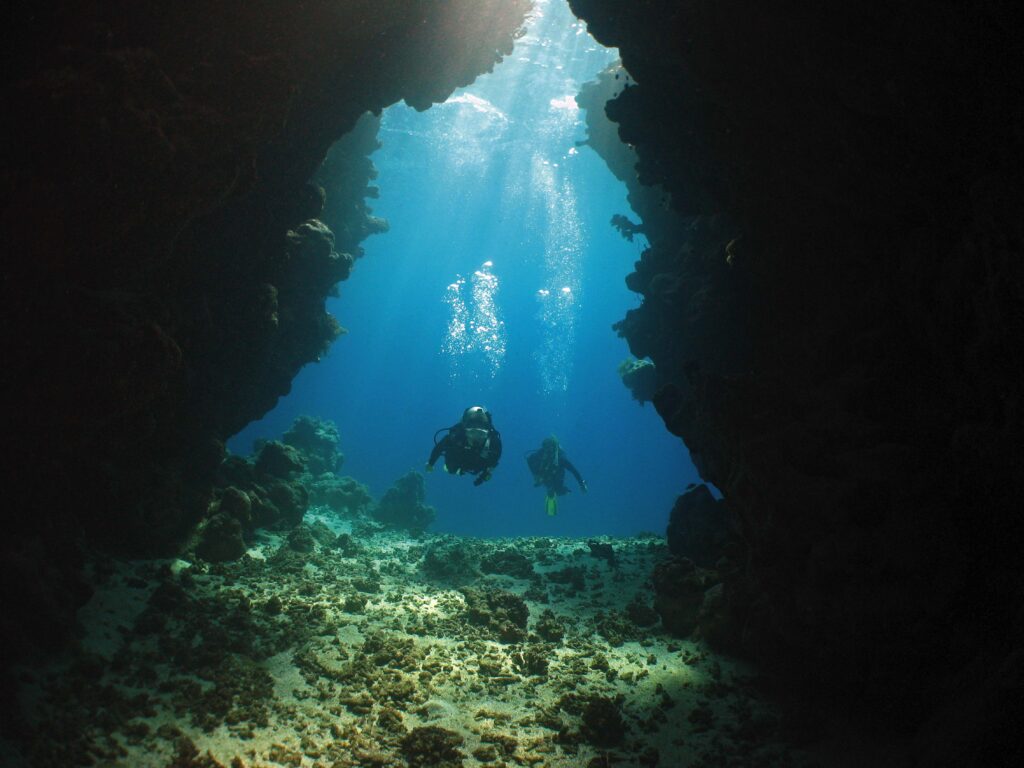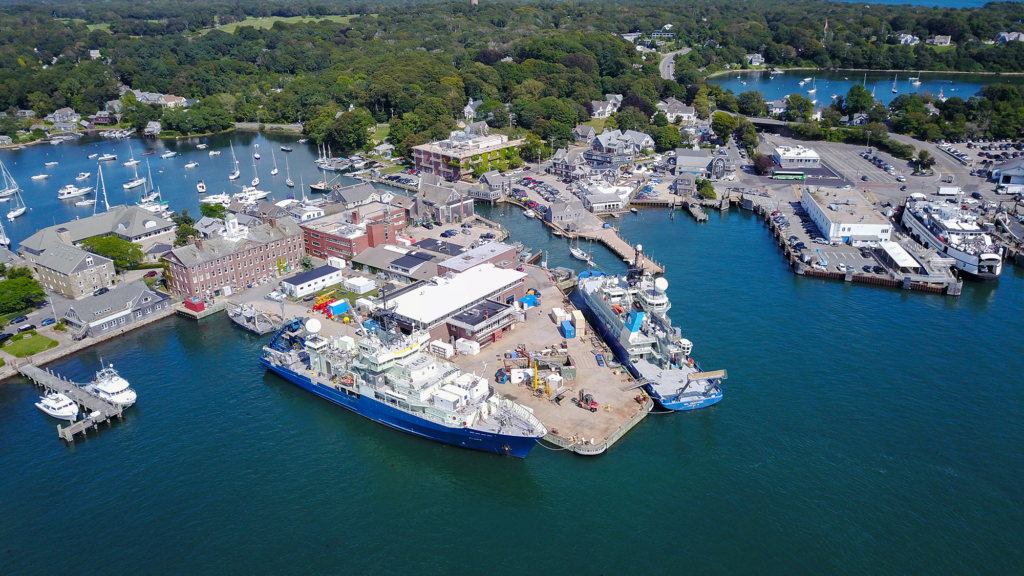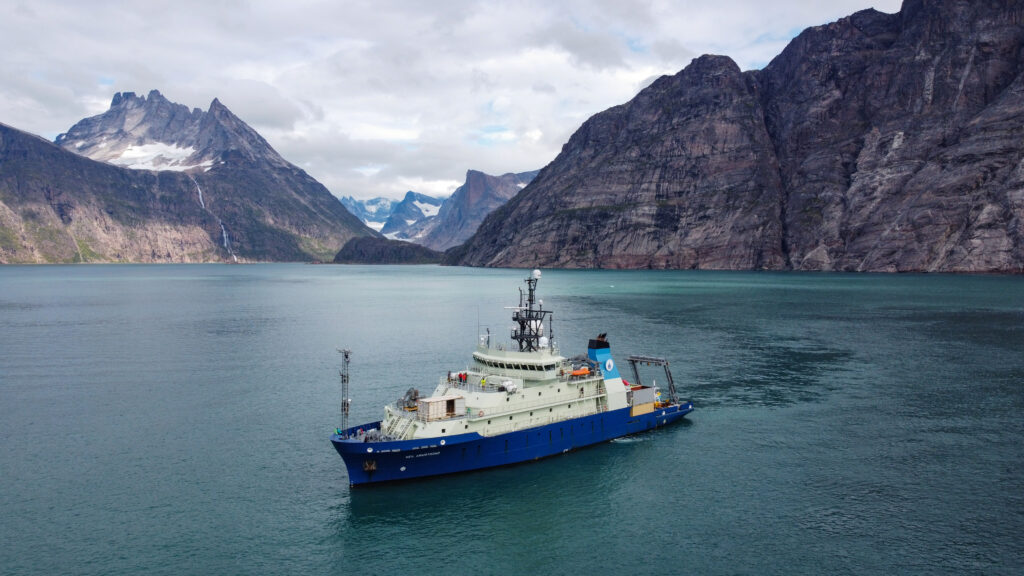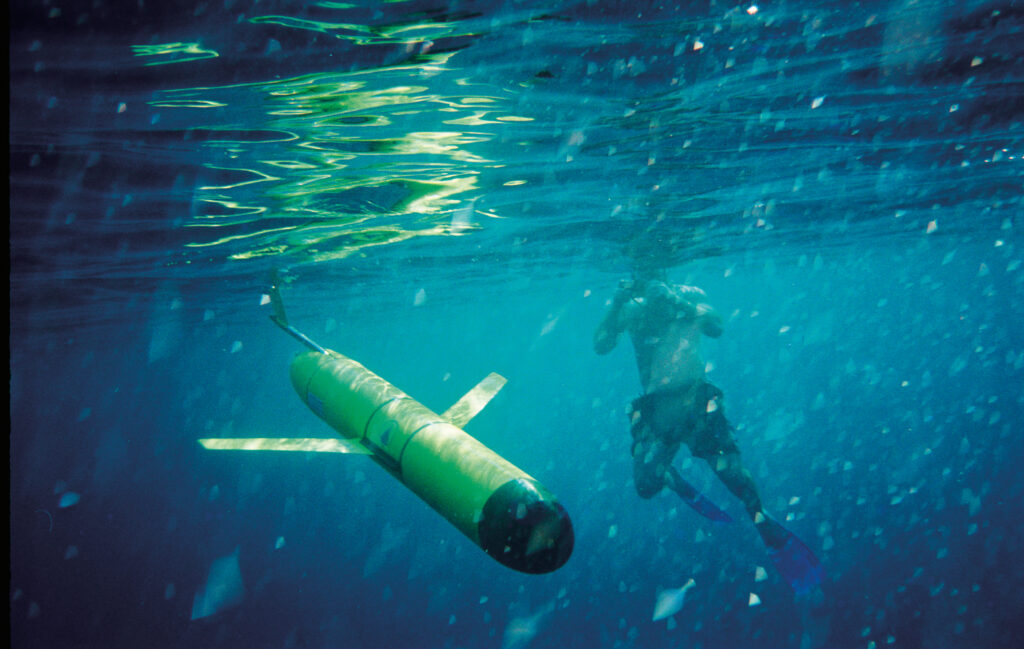OCEAN FRONTIERS
BREAKTHROUGHS IN BLUE TECH & MARINE RESEARCH
New Bedford’s robust fishing industry and the region’s marine science and technology sector significantly contribute to our knowledge of oceans and environmental issues. SouthCoast research institutions and new technology are pivotal in advancing marine research, employing cutting-edge tech such as autonomous underwater vehicles (AUVs) and satellite-based remote sensing to study oceanography, marine biology, and climate science.
Accelerating the Search for Solutions
WOODS HOLE OCEANOGRAPHIC INSTITUTION
Falmouth, MA
Woods Hole Oceanographic Institution (WHOI) is the world’s leading, independent non-profit organization dedicated to ocean research, exploration, and education. WHOI is dedicated to advancing knowledge of ocean research, exploration, and education.
Researchers at WHOI investigate ocean circulation, marine biodiversity, seafloor geology, climate change impacts, and develop advanced oceanographic instruments and underwater vehicles for exploration and monitoring. Their work contributes to a better understanding of the oceans’ role in the Earth’s systems and informs solutions for pressing environmental challenges.

Our Oceans. Our Planet. Our Future.
Since 1930, WHOI scientists and engineers have laid the groundwork for many of the discoveries that have revolutionized our knowledge about the ocean and its impacts on our planet and our lives. From the discovery of hydrothermal vents to the development of revolutionary ocean technology to mapping global ocean circulation, this research matters now more than ever before.
Breakthrough Ocean Science and Technology
R/V ATLANTIS & R/V NEIL ARMSTRONG
These research vessels (R/V) play a pivotal role in ocean exploration, meeting the range, endurance, and technical requirements to support advanced oceanographic research in tropical and temperate oceans around the world.
ROV JASON
JASON is a remotely operated vehicle (ROV) system designed and built by WHOI’s Deep Submergence Laboratory to allow scientists to have access to the seafloor without leaving the deck of a ship.
- Equipped with sonars, video and still imaging systems, lighting and sampling systems
- Manipulator arms collect samples of rock, sediment, or marine life – “Elevator” platforms float heavy loads to the surface
- Scientists work from a ship’s control room to monitor and maneuver
ORPHEUS
- Autonomous underwater vehicle (AUV) used for studying deep-sea ecosystems and geology
- Depth rating: 11,000 meters (6.8 miles)
- Non-disruptive seafloor landing and sampling
- Equipped with advanced sensors and imaging systems
SLOCUM GLIDER
- Autonomous Underwater Vehicle (AUV) for oceanographic research and monitoring
- Uses changes in buoyancy for propulsion
- Equipped with sensors, transmits data in real-time
- Can move both horizontally and vertically
- Can patrol for weeks at a time
ALVIN
- Human Occupied Vehicle (HOV) used for collecting data and producing maps and photographic surveys
- Robotic arms recover samples from the ocean floor
- Depth rating: 6,5000 meters (3.98 miles)
- Enables in-situ data collection and observation by two scientists and a pilot inside the titanium sphere protecting them from the extreme pressures




